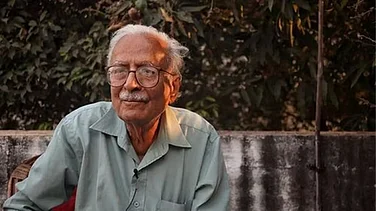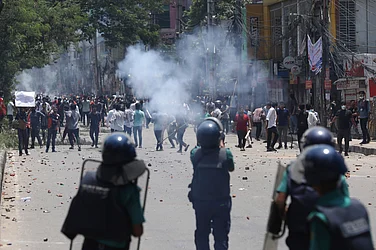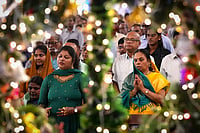Security forces operating in the Kashmir Valley are familiar with the term 'white terrorism'. For the average Kashmiri, it is a form of state-sponsored action with the tacit approval of the authorities to ensure that "the right message goes out". The skewed idea is to keep the local population terrorised so that they do not extend any help to militants.
Was the killing of five civilians in the early hours of March 25, 2000, by the army following the Chitsinghpura Sikh massacre a case of white terrorism? The chargesheet filed by the CBI, after three years of investigation, raises serious questions about the army's role and the shocking cover-up. The sordid tale in a nutshell is that on the eve of President Bill Clinton's visit, militants struck at Chitsinghpura on May 20, killing 36 Sikhs. Five days later, the army responded by gunning down five villagers in Pathribal, Anantnag district, and passing them off as the militants responsible for the May 20 attack.
The CBI chargesheet, accessed by Outlook, exposes the institutional efforts of the army to cover up the incident and to protect the guilty. A series of letters and documents annexed to the chargesheet show that at every stage army headquarters and its lower formations refused to cooperate with the CBI. The army top brass tried to shield the officers involved from being prosecuted by a civilian agency. But what has also angered many is the fact that the army chose to promote all the accused even while the investigation was on.
Here are some of the documents in the CBI chargesheet:
- An official letter to the CBI signed by Brigadier Bikram Singh, on behalf of the then vice-chief of army staff (No. A/38240/MO3A), dated December 31, 2004, states that the officers cannot be prosecuted because they are protected under the Armed Forces Special Powers Act (J&K), 1990. The Act provides immunity from prosecution for actions undertaken in disturbed areas.
- A communique to the agency from Major Vinay Bali of Sector 1 Headquarters, Rashtriya Rifles (RR), (No. 1001/P/GS (OPS)), dated July 28, 2003, claims that it is difficult to find the names of the individuals who took part in the Pathribal operation.
- A note from Sector 1 RR Headquarters (Letter No 241/1/GS (Ops)) is categoric that Pathribal was a joint police-military operation. This was subsequently denied by the then Anantnag SSP Farook Khan who told the CBI that the battalion conducted the operation after they received intelligence inputs from their own sources.
- The 'after action' report of the army states that a local, Mohammed Yusuf Wagey, had given information on March 24, 2000, about the hideout of the militants responsible for the Chitsinghpura massacre. However, the names that Wagey provided do not match with the people killed.
- The army claimed that three of the five killed were Pakistanis. The dna reports prove that all five were local residents. This, the CBI says, "is indicative of a preconceived notion with a view to justify the alleged encounter."
- The CBI claims there is ample evidence and witnesses to show that the five men were abducted and later evidence was destroyed deliberately.
- The CBI found it "highly improbable that RR personnel used such a huge amount of ammunition against five unarmed civilians. This was done to create a false impression of an encounter".
- Strangely, nobody from the army suffered any injuries in the operation.
- A typed memo of the encounter submitted by the army authorities raises several questions. The CBI says such a typed memo couldn't have been prepared at the site of the encounter if it was genuine. The CBI believes it was prepared much later as a cover-up.
- The copy of the seizure memo submitted on April 4, 2000, and the voucher submitted to the police on August 8, 2000, when the seized weapons were handed over, contradict each other. The seizure memo submitted does not mention any damage to the five AK-47 rifles allegedly recovered from the 'militants', but the voucher to the police points to damages. Very clearly this was done because if the 'militants' were charred beyond recognition, then how could their weapons be intact? This, the CBI says, is "manipulation".
- Finally, the testimony of inspector Mukesh Kumar of the J&K Police stf that none of the photographs or particulars of the actual militants matched the dead bodies of the villagers.


























